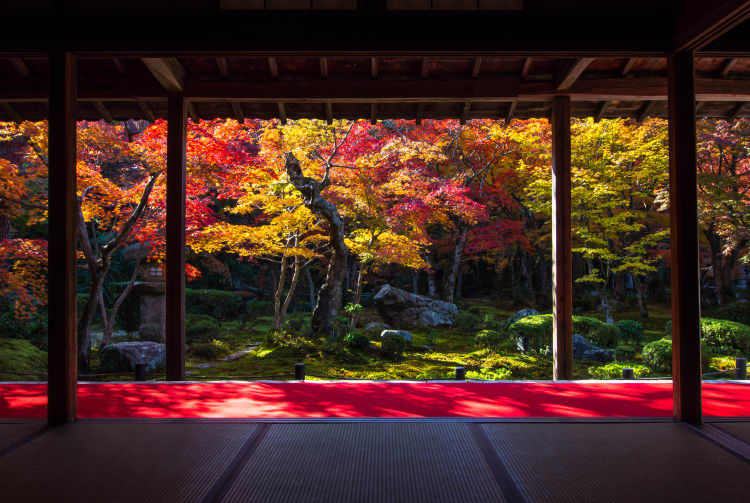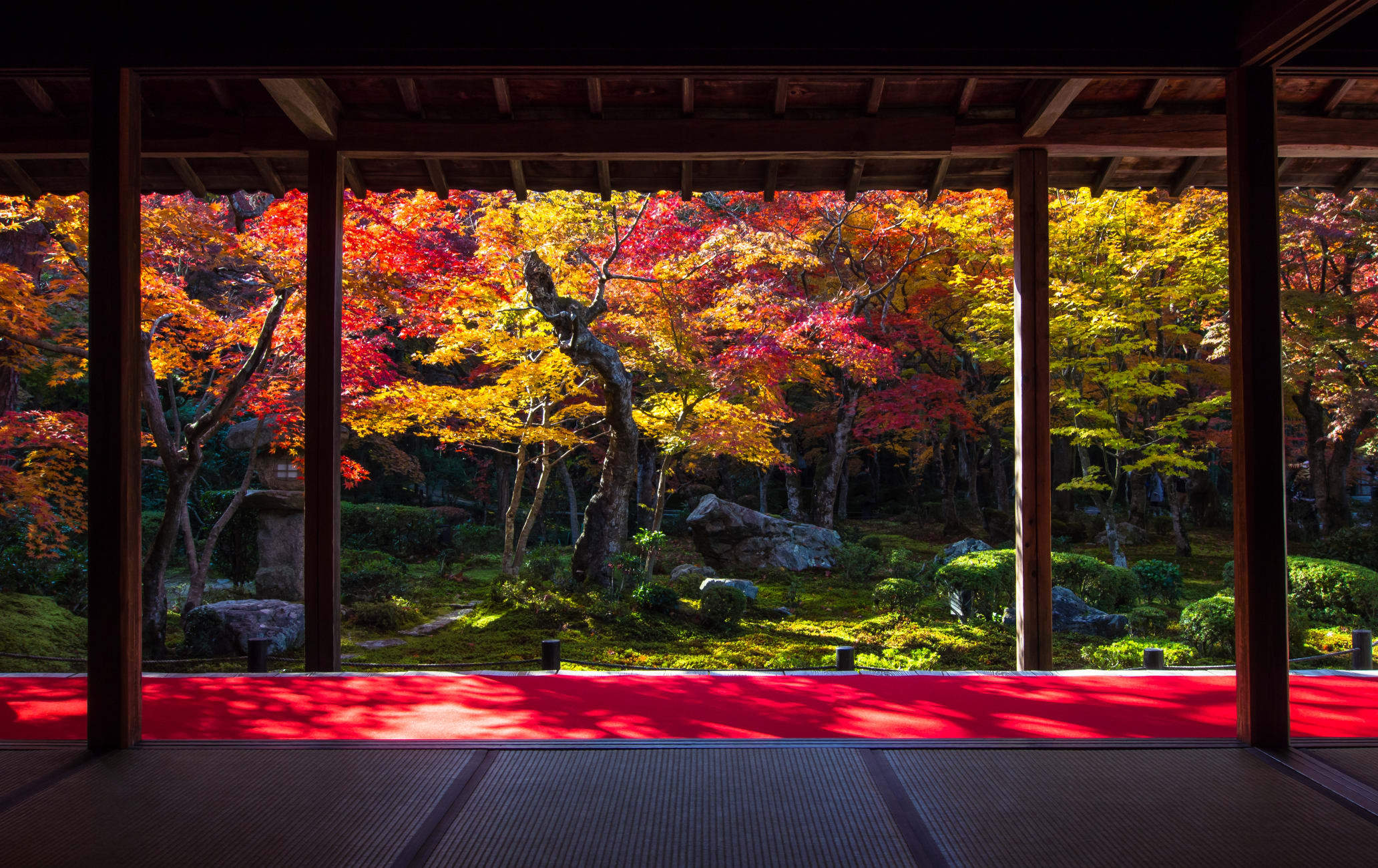Zen serenity and musical ornaments at one of Kyoto's lesser-known temples
A stone's throw from Shugakuin Imperial Villa in the northeast of Kyoto, Enkoji Temple should be on your schedule for its impressive gardens, scenic location and autumn foliage.
Quick Facts
The temple belongs to the Rinzai Zen sect of Buddhism
It was once a school that was open to the general public
You can get a bird's-eye view of Enkoji Temple by climbing the hill behind the temple garden
How to Get There
The temple grounds are easily accessible on foot from Shugakuin or Ichijoji stations.
From Kyoto Station, catch the JR Nara Line to Tofukuji Station, and then transfer to the Keihan Main Line to Demachiyanagi Station. From there, ride the Eizan Railway to Ichijoji Station. You can also take the number five bus from Kyoto Station all the way to the Ichijoji Sagarimatsucho bus stop.
A liberal past
The temple was founded by Tokugawa Ieyasu in the 1600s as the Rakuyo School and became known as an open-minded place of learning. It attracted an unconventional crowd of artists and writers. Later it became a seminary for women.

Unique garden ornaments
Enkoji Temple is famous for the suikinkutsu, a musical ornament often found in traditional Japanese gardens. A pot is buried upside down in the ground and water collects within it through a hole in its top. When more water drops onto the surface of the water, a calming bell sound is emitted, adding to the Zen atmosphere of the temple.


Bamboo forest
If Arashiyama's bamboo forest is too crowded for your liking, Enkoji Temple's smaller bamboo forest is located just behind the garden's quaint pond.
Rock gardens
Enkoji Temple also features a picturesque garden centered on a pond called Jugyuno-tei, and a dry landscape garden called Honryu-tei. Honryu-tei, or Running Dragon, is quite unusual as sharp rocks jut out of the sand at various angles to symbolize a flying dragon. The other is filled with maples that transform the area into a fiery field of red and orange during autumn. A small hill behind the temple affords a grand view of the mountains of Kyoto.
Going further
While you're in the neighborhood, visit nearby Shisendo Temple , a serene Buddhist temple of the Soto Zen sect. It was built in the 1600s and considered a masterpiece of its time.


























































